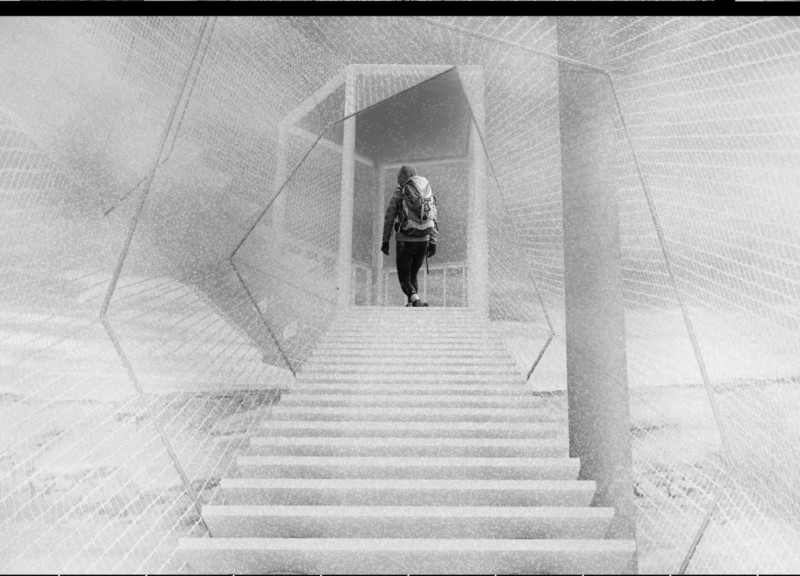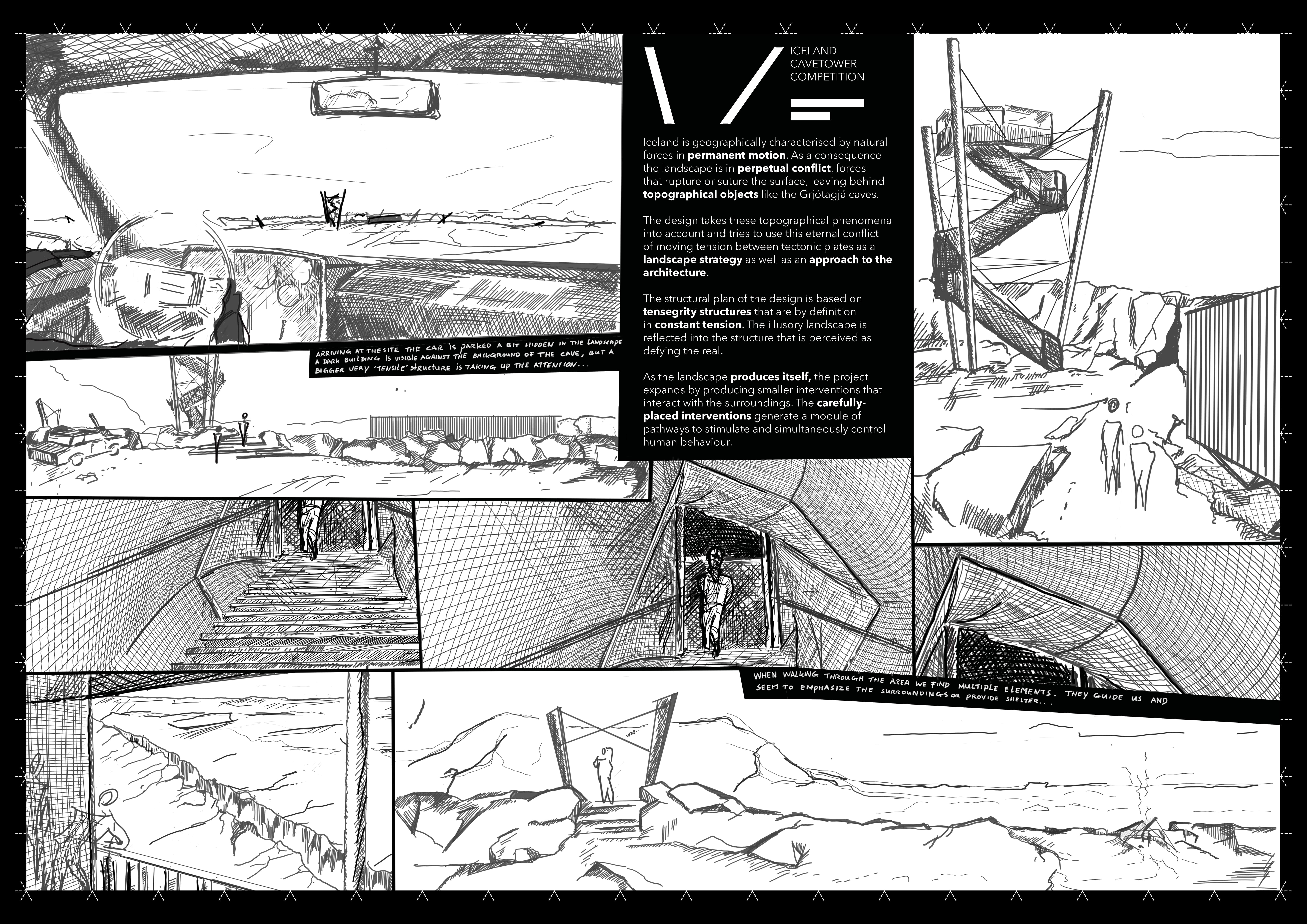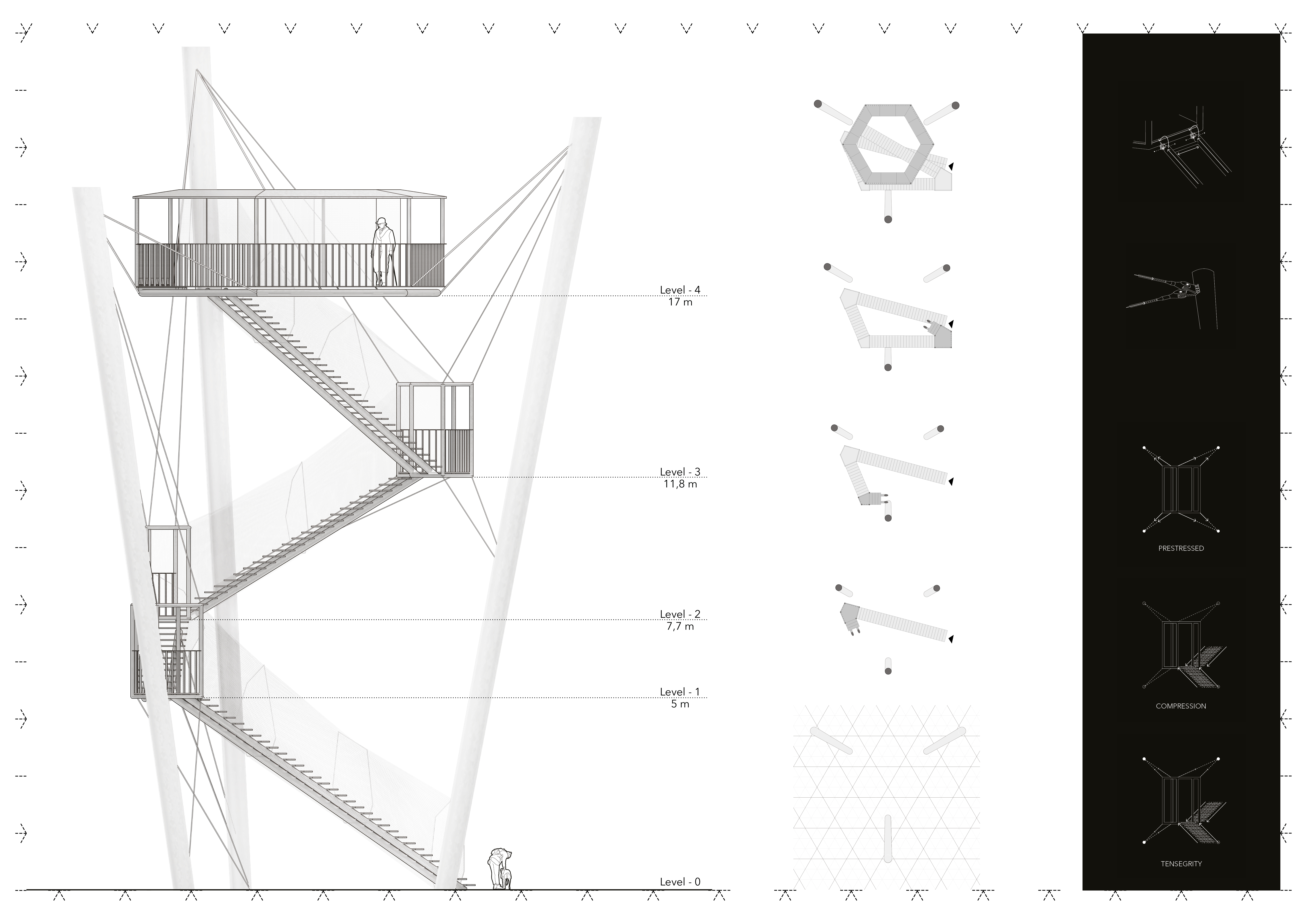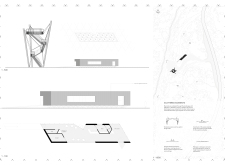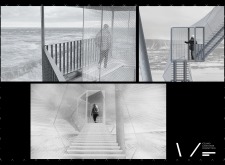5 key facts about this project
The design engages with its geographical context in Iceland, a region shaped by natural forces and unique geological formations. The building, with its dark appearance, contrasts with the nearby caves, creating a relationship that highlights the distinct characteristics of the landscape. The focus is on how the built environment interacts with natural topography, leading to a design that balances practical use with thoughtful aesthetics.
Tensegrity Structures
The design features tensegrity structures as a central element. This technique uses a combination of continuous tension and separate compression components, allowing the building to exist in a constant state of tension. Such a design responds effectively to the region's geological conditions while promoting structural efficiency. This method minimizes material usage and maximizes usable space, reflecting a careful consideration of both function and design intent.
Pathway System
A network of pathways is vital to the layout, placed to encourage visitors to explore the site actively. These pathways allow for easy navigation through diverse spaces, providing options for enjoying views of the landscape or areas for shelter. The arrangement fosters an understanding of the project and enhances the visitors’ experience by connecting them closely to the natural surroundings.
Interventions and Interaction
Throughout the site, smaller architectural elements are strategically positioned to highlight the surrounding environment or offer protection from the weather. These features guide people as they move around, underscoring the connection between the built spaces and the natural landscape. Each intervention is designed with care, showing how architecture can respect and complement its environment.
The overall composition creates a clear relationship with the landscape, as the dark structure mirrors the geological formations nearby. The design invites exploration and interaction, drawing attention to the details of the area and enriching the experiences of those who visit.


